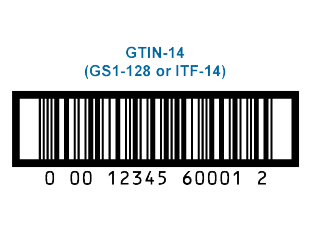Whole-Chain Traceability via a Bar Code
Using GS1 standards and the Global Trade Item Number, a global organization can embrace whole-chain traceability, what means it can locate a potentially harmful product in minutes anywhere in the supply chain.
 Consumers trust the foods they eat are safe and the industry is working hard to make sure that food safety remains a top priority. But as food industry leaders, we continue to ask ourselves, how can we do even better to deliver on our promise of providing safe food to consumers?
Consumers trust the foods they eat are safe and the industry is working hard to make sure that food safety remains a top priority. But as food industry leaders, we continue to ask ourselves, how can we do even better to deliver on our promise of providing safe food to consumers?
The answer is supply chain traceability, and the industry as a whole still has opportunities to fully achieve integrated traceability. While most companies have some level of traceability in place, some sectors are further along in implementing electronic traceability processes than others.
Integrated or whole-chain traceability is the combination of internal and external traceability processes, meaning a company’s internal data and processes used within its own operations to track a product are integrated into a larger system of external data exchange and business processes that take place between trading partners. Both processes are needed to effectively trace product up and down the supply chain to achieve whole-chain traceability. Organizations that fully embrace these processes based on the “identify, capture, share” principles, which allow for interoperability, reap the benefits of enhanced efficiencies and improved consumer trust.
Just imagine: With whole-chain traceability utilizing GS1 standards, a global organization can locate a potentially harmful product in minutes anywhere in the supply chain if the safety of the product comes into question.
GS1 US is a neutral, not-for-profit, organization that brings business communities together to solve supply-chain problems through the adoption and implementation of GS1 standards across multiple sectors.
The GS1 System of Standards enables companies to uniquely identify products in the supply chain in order to achieve supply chain visibility and efficiency. Using GS1 identification numbers, including the GS1 Global Trade Item Number (GTIN), companies around the world can identify trade items as well as supplementary information (expiration date, serial number, batch/lot number) to facilitate the communication of product-specific information wherever a barcode is scanned. These whole-chain traceability processes help a company stay vigilant even before an event to protect their consumers.
Case in point: Mother Earth LLC, a West Grove, Pa., mushroom grower, last year took a proactive role in meeting the evolving demands of its customers, while remaining committed to delivering a safe and tasty product. The company annually grows, packs, ships and transports more than 20 million lbs. of fresh, quick-frozen and dried mushroom varieties to distributors, retailers and the foodservice industry. The family-owned business for years utilized an outdated paper-based system and had an operational structure that left it vulnerable to human error, increasing the potential for dangerous and costly mistakes.
With careful consideration, Mother Earth implemented a case-level traceability process. Now, with real-time inventory management, the company fulfills orders quickly and accurately, has an improved recall process and has reduced labor-intensive tasks for greater productivity.
Companies such as Mother Earth have the ability to optimize their businesses while stepping up their commitment to food safety by implementing best practices developed by volunteer working groups of the Produce Traceability Initiative (PTI). PTI has been leading the fresh food industry in identifying the needs and solutions necessary to implement product traceability with highly perishable product and across a complex and fractured supply chain. PTI guidance incorporates the use of GS1 Standards for product identification and information exchange to efficiently track products and establish electronic recordkeeping of product data from farm-to-store, or farm-to-restaurant. This is the most visible example of a proactive, industry-led effort guiding stakeholders representing every part of the produce supply chain toward case-level traceability.
Companies hesitant about modifying their systems might ask “why now?” Product traceability is at center stage for many reasons. Collectively, the benefits of an integrated traceability process could represent approximately $3 billion in savings to the fresh foods industry as a whole, so it’s no surprise that reduction of unnecessary expenses due to manual processes and costly recalls are among the key drivers for change. The Food Safety Modernization Act is another major catalyst for developing more sophisticated tracing systems.
This past summer, the Institute of Food Technologists launched the Global Food Traceability Center (GFTC), designed to help provide an unbiased source for traceability information for those who want to make progress. GS1 US and other founding sponsors will play an important role in shaping the future of traceability in the center’s four priority areas: research; standards; education and training; and technology transfer.
Many leaders of the GFTC have stated achieving more precise recalls is a major goal of their work, as they would help eliminate unforeseen costs associated with waste. With whole-chain traceability processes in place, a company like Mother Earth that discovers a known pathogen can efficiently identify and isolate the culprit crop — reducing food waste, increasing a company’s profitability and, more importantly, maintaining a happy, healthy customer base.
Ultimately, whole-chain traceability leads to overall supply chain visibility, which provides the benefit of confidence in a company’s processes. Adopting a standardized traceability process means a sustainable, 21st century outlook, and a way for a business continue to move forward.
Source: foodprocessing.com


